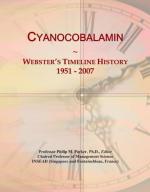|
This section contains 542 words (approx. 2 pages at 300 words per page) |

|
The simultaneous discovery of vitamin B12 by two research teams—one in the United States and one in England--was the culmination of an intensive worldwide search for a compound that could effectively treat pernicious anemia. Until the 1920s, pernicious anemia--a blood disorder in which the red blood cells fail to develop normally--was invariably fatal. Then two physicians, George Richards Minot (1885-1950) and William Perry Murphy, became inspired by George Whipple's (1878-1976) studies that showed beef liver could improve the formation of red corpuscles in anemic dogs. To test Whipple's findings, they began feeding their patients large amounts of beef liver and, in 1926, were able to announce that a daily diet of about a pound of liver could indeed control the deadly anemia. (For their work, Minot and Murphy, along with Whipple, shared the 1934 Nobel Prize in medicine and physiology.)
During the 1930s, researchers around the...
|
This section contains 542 words (approx. 2 pages at 300 words per page) |

|


